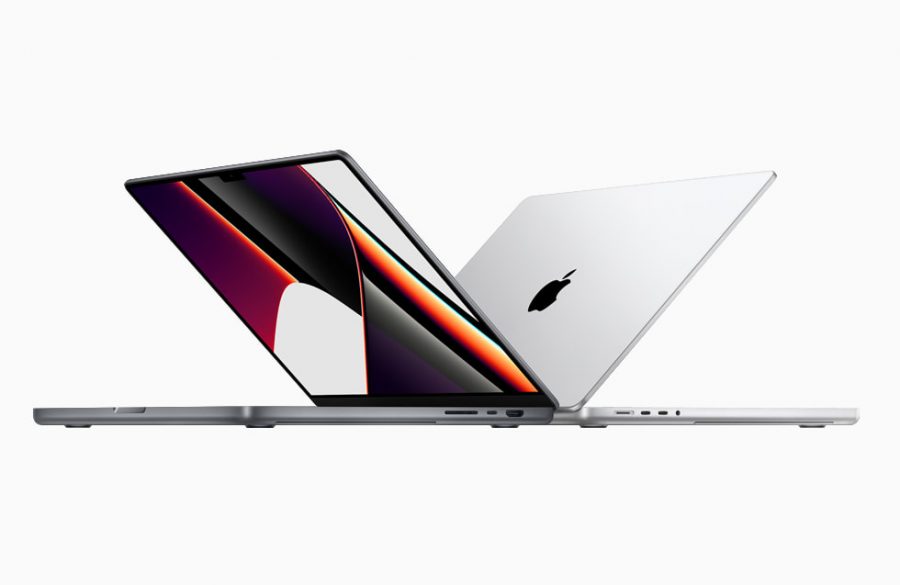Apple’s new MacBook is finally “Pro”
October 31, 2021
Those who know me are aware that I am not exactly the world’s biggest Apple fan. Their phones feel lackluster compared to so many competitors. On the other hand, their full-fledged computers have been taking massive steps forward. With the desktop Mac Pro and the M1 System on a Chip (SoC) platform released last year, Apple computers have been killing it.
Apple made a massive move on Monday, Oct. 18, when they released the new MacBook Pro that was complete with an array of changes to both the internal hardware and to the exterior.
Inside the new MacBook Pro, Apple has adapted the M1 SoC to handle a heavier workload in their Professional line of products. The M1 chip comes in two flavors for the new generation MacBook: M1 Pro and M1 Max, with the latter being the more powerful of the two.
The chips are Apple’s in-house silicon manufactured exclusively for their products. These SoCs are complete units that contain the processor, RAM, graphics card, and chipset. All of these components were previously provided by outside manufacturers like Intel in the case of the processor.
Although at first I was skeptical because Apple has a history of making some less than ideal decisions that hinder the performance of products, but current benchmarks proved me wrong and put these new SoCs well ahead of their predecessors and competitors.
The M1 pro and max are especially power efficient, which is consistent with Apple’s chip manufacturing for their mobile devices.
We have already seen how powerful the original M1 chips have been, and these professional grade variants certainly live up to their “Pro” name, something that isn’t always the case in a world of phony marketing.
I was even more impressed by another decision Apple made, and one that is very unusual for their brand. Apple listened to consumers and brought back an array of I/O ports that were previously removed from the product in favor of all USB type C ports.
Since the target demographic for the MacBook Pro is professionals who use camera gear and connect with other technologies, the switch to USB-C exclusively ruined many people’s workflow. The loss of an SD card reader in particular caused significant backlash. Apple also did away with their signature Mag-safe charging port, which was a fan favorite.
In a somewhat out of character move, Apple not only added back the SD card reader, but also an HDMI port, a Magsafe charging port, and retained two thunderbolt four ports.
The product is definitely not perfect, I find the screen notch rather ugly, but at the very least Apple is finally retaining pro features for their “Pro” line of products and they have made worthwhile changes.








